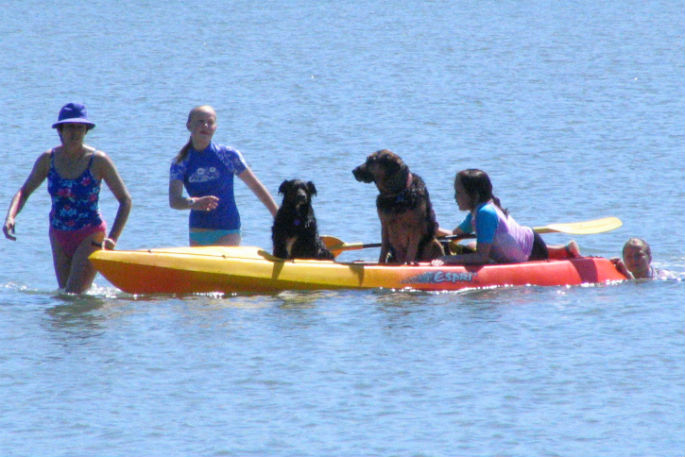More than half the country may have taken to the water in boats last summer, according to new research released this week.
The 51 per cent who are estimated to have gone recreational boating over the summer, were driven by the weather, says Safer BoatingForum chair and Maritime NZ deputy director Lindsay Sturt.
'In what was one of our hottest summers, we had record numbers on the water in boats, kayaks, paddleboards and all sorts of craft on at least one day,” says Lindsay.
'Most summers, about 30 per cent of Kiwis take part in recreational boating. What likely caused the jump to 51 per cent was the weather. More people probably had an occasional boating trip with family or friends because there was more great weather.
Lindsay says 'New Zealand is a nation of boaties” and it appears about one-third to half of the population takes to the water in some one million recreational crafts.
The big numbers mean boat safety is really important, as it means more occasional boaties on the water not understanding how to be safe, and without the right equipment.
'Last summer we found fewer people reported wearing a lifejacket all the time they were on the water. We do not know if they did not have lifejackets or if they just did not wear them,” says Lindsay.
'Whatever the reason, we want to get the message across, ‘always wear a lifejacket when you are on the water'. If you're the ‘skipper' taking friends or family, or anyone else out on the water, make sure everyone is wearing a lifejacket.”
Those most likely to wear lifejackets were kayakers – 81 per cent reported they always wore lifejackets. They are also the biggest group of boaties, the fastest growing, most likely to be women (52 per cent), and the youngest.
Least likely to always wear lifejackets were powerboat users – 52 per cent – down from 61 per cent in 2014. Powerboat users are the second largest group of boaties, 64 per cent of whom are male, and are the oldest.
Over time, two trends in recreational boating fatalities are telling. It is likely that two-thirds of fatalities could have been avoided if lifejackets had been worn, and 90 per cent of fatalities were men.
'Young people using kayaks and other small craft are a new, important target audience for us,” says Lindsay.
'That's because there are simply so many of them on the water, and the number keeps growing.
'However, our primary audience for Safer Boating Week remains men aged 30-60, using boats up to six metres, who overestimate their abilities and underestimate the risk. Sadly, that's because they are the most likely to have an accident, and for the accident to be fatal.”
Safer Boating Week is the week before Labour Day weekend, the traditional start of recreational boating in much of the country. The aim is to encourage boaties to take simple steps before getting back on the water: Prep your boat, Check your Gear, Know the rules.
Prep - service the engine, check and change the fuel, check the battery and just generally give the boat a good onceover.
Check - make sure your lifejackets are still fit for purpose and you have enough. Service any inflatable lifejackets and ensure you have two reliable forms of communication equipment.
Know - ensure you know the 'rules of the road” on the water, and check your local bylaws to make sure you understand what the requirements are in your area.
For lots of information about what is happening around the country visit the Safer Boating Forum website at: www.saferboating.org.nz



2 comments
Lifejacket no guarantee
Posted on 20-10-2016 12:33 | By sobeit
This continual harping on about wearing a lifejacket creates a false sense of security. Watching the weather,not overloading the boat,proper maintenance, educating yourself on boat manship and seamanship is far more important.All a lifejacket guarantees most time is its easy to find the body .
Sobeit
Posted on 21-10-2016 08:00 | By Kenworthlogger
Comments like yours do nothing for peoples safety. Its a bit like wearing a seatbelt in a car.
Leave a Comment
You must be logged in to make a comment.